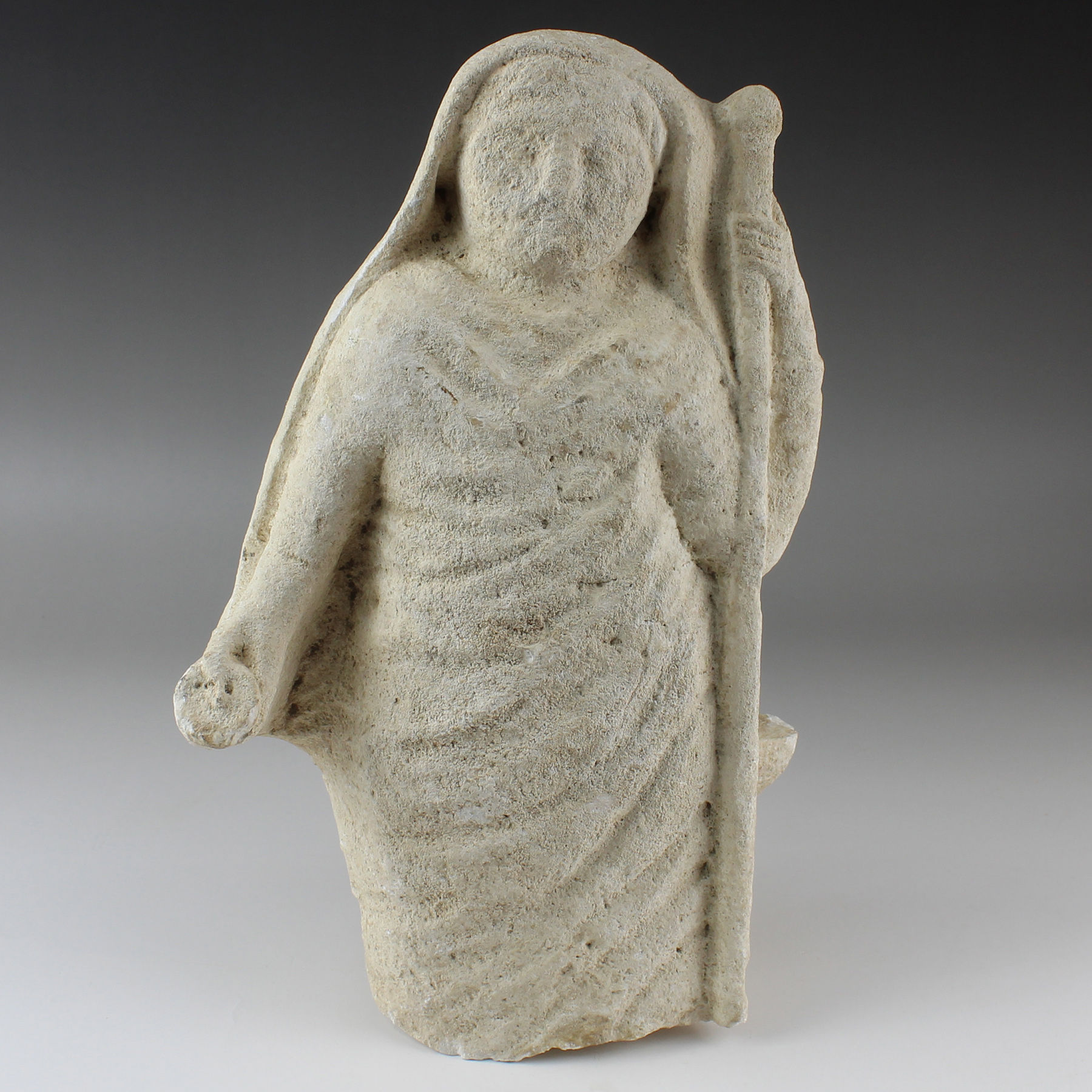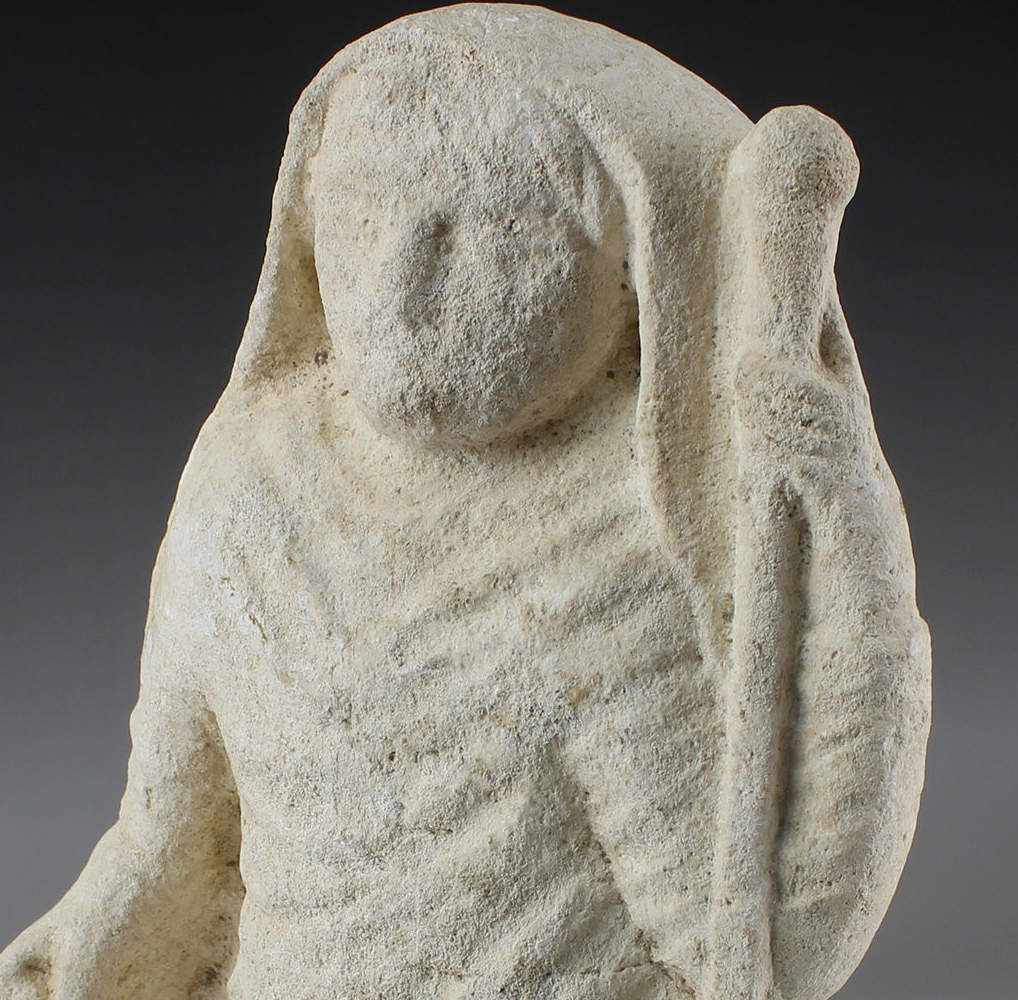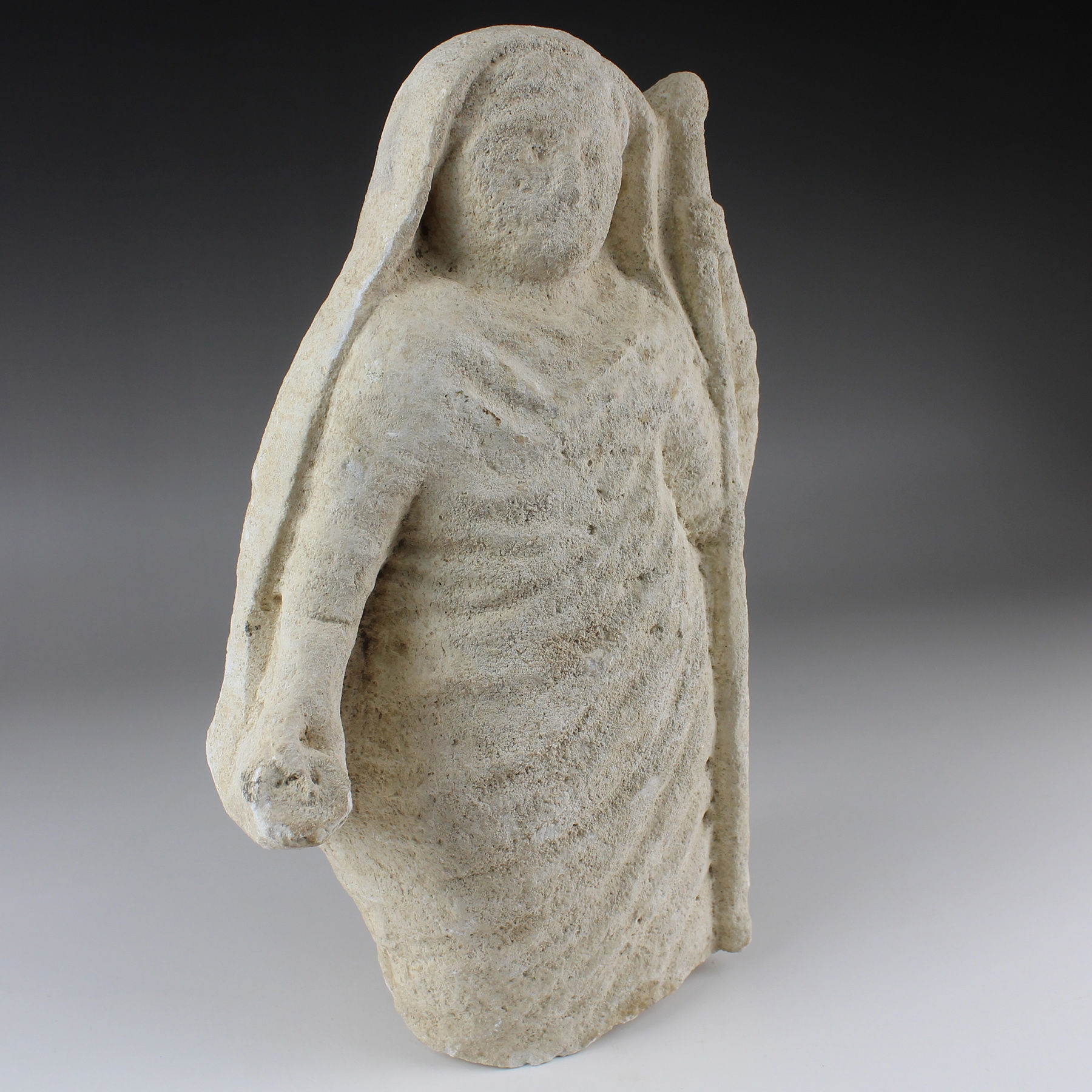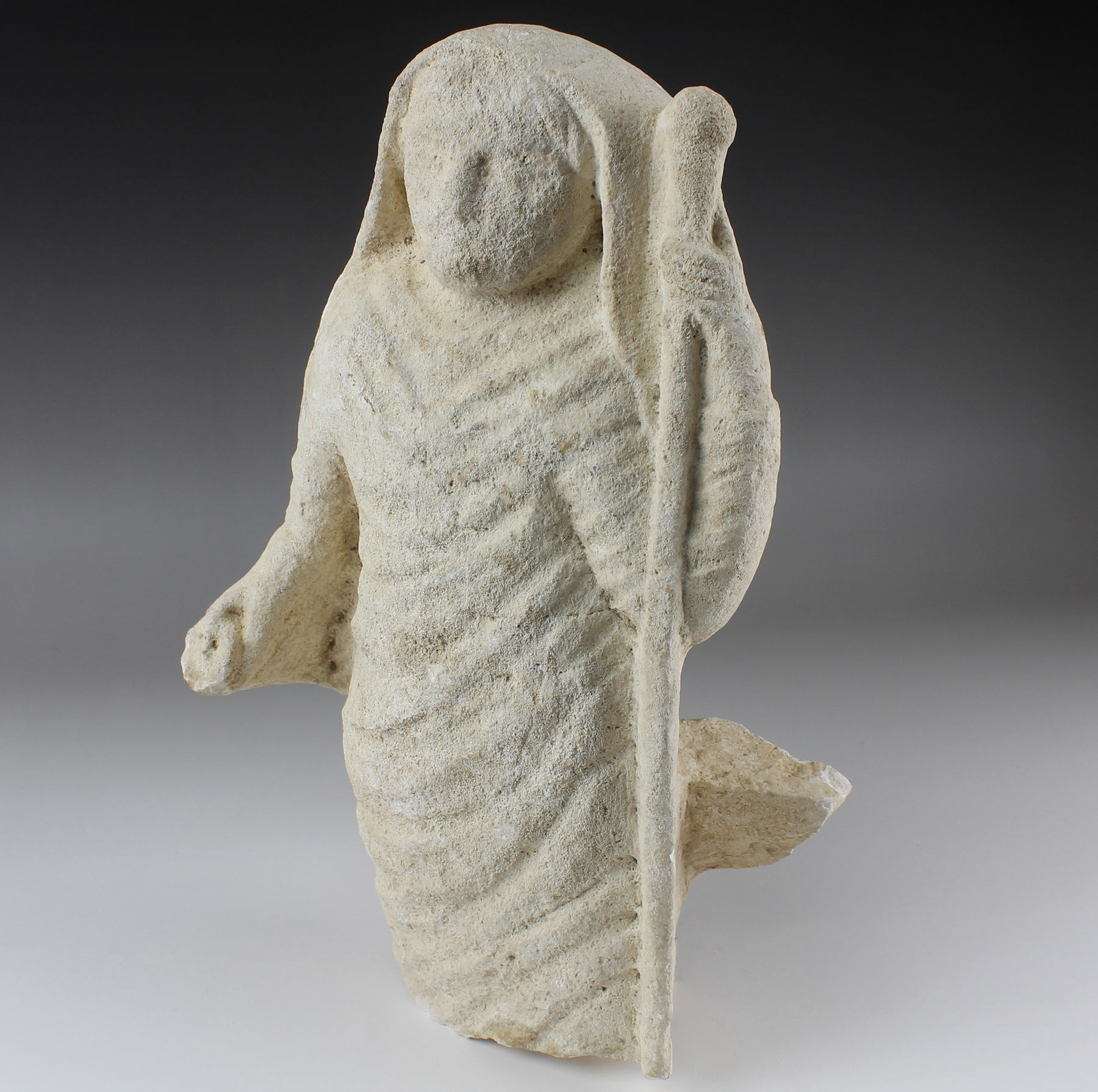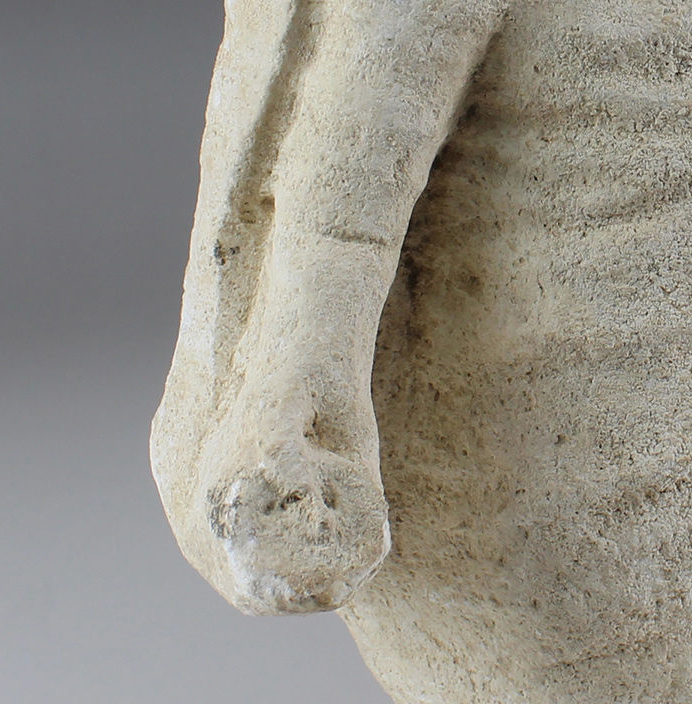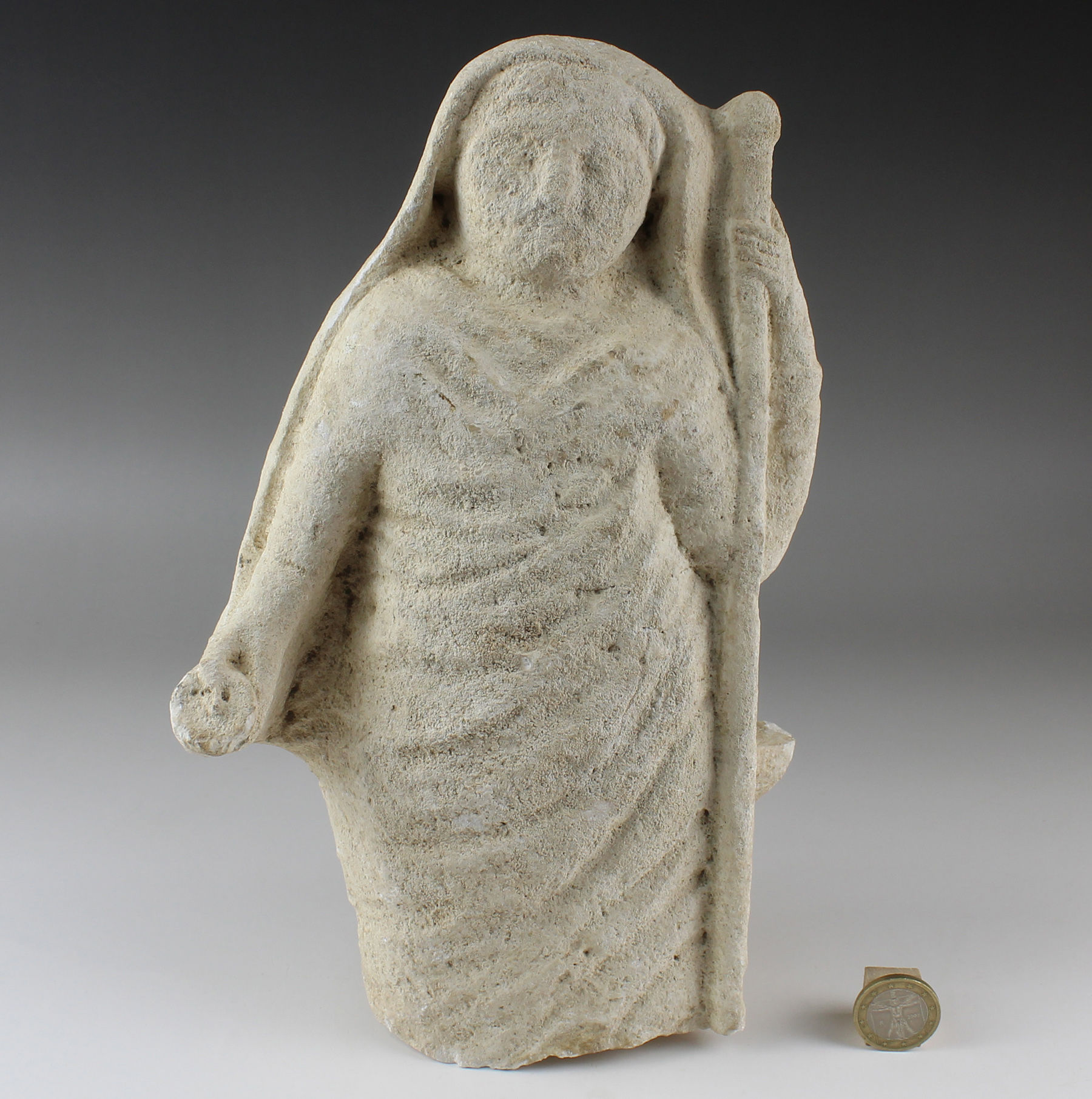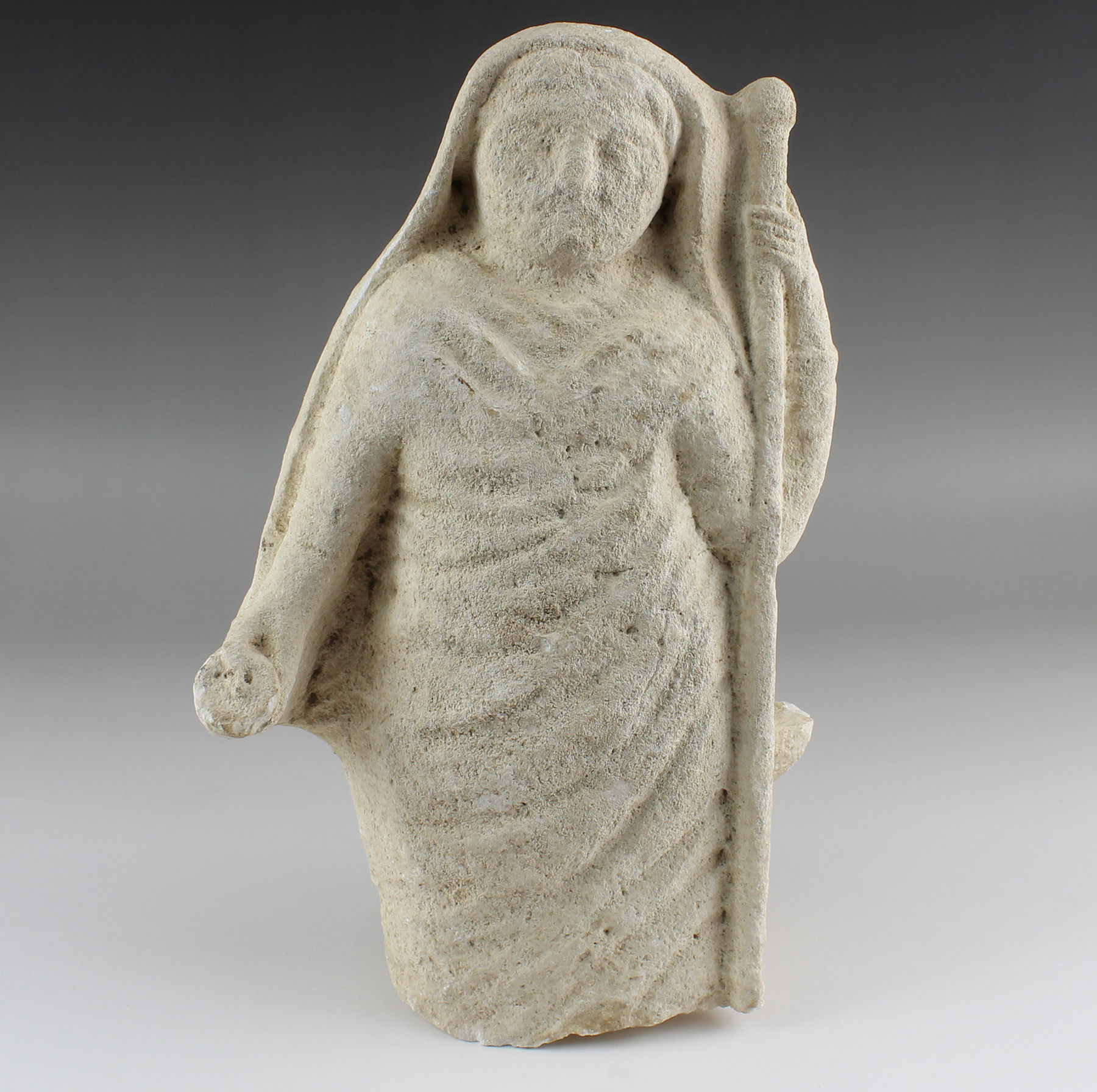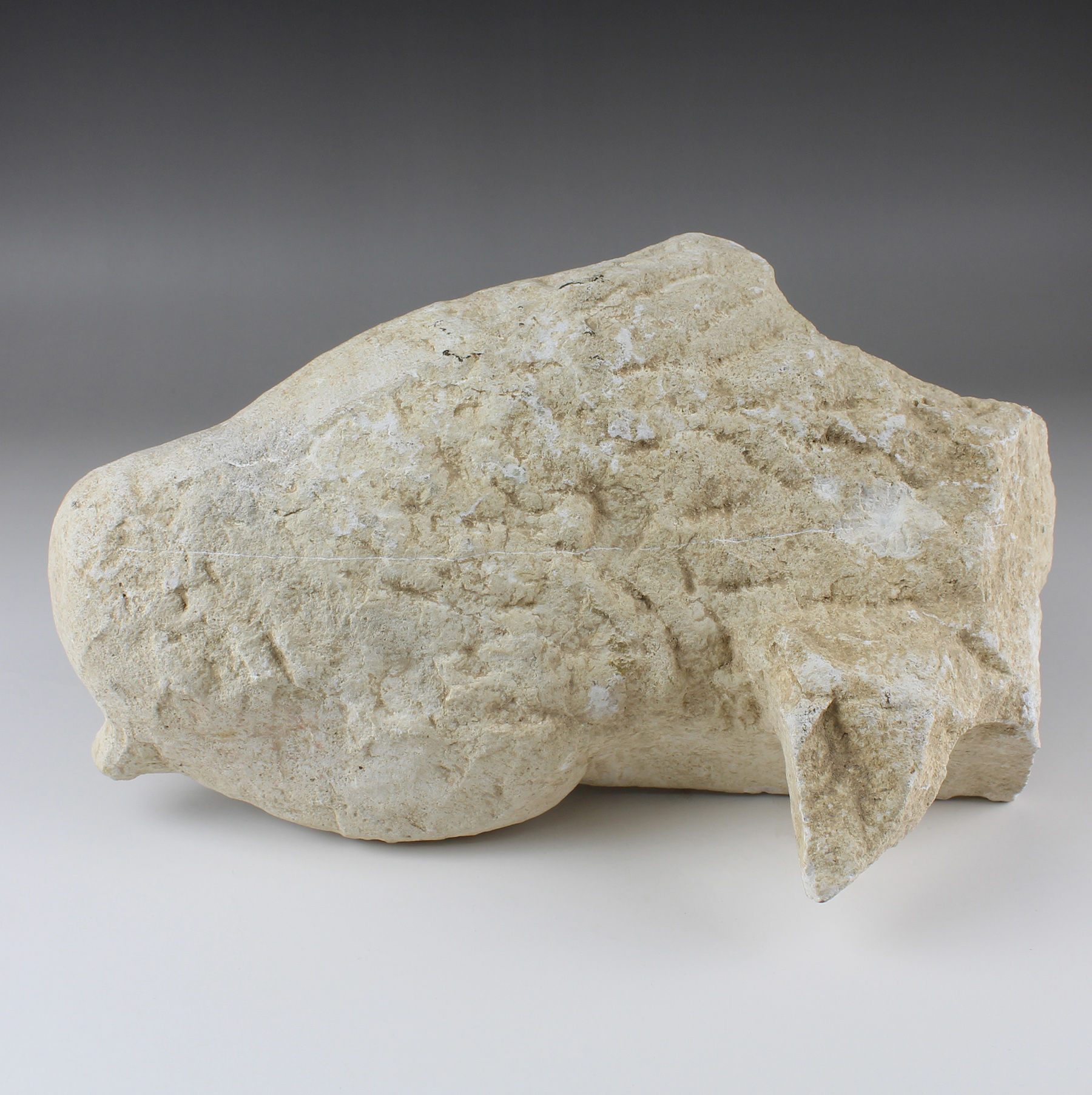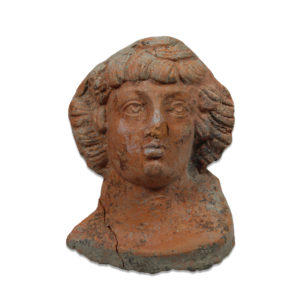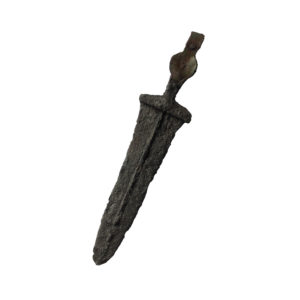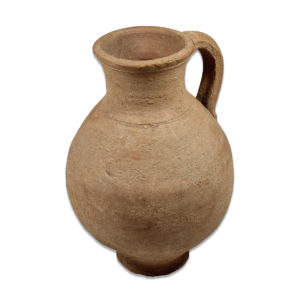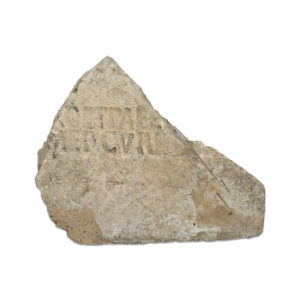Description
| ITEM | Relief of robed and veiled priestess holding a patera and staff of authority |
| MATERIAL | Limestone |
| CULTURE | Roman, Palmyra |
| PERIOD | 2nd Century A.D |
| DIMENSIONS | 265 mm x 170 mm x 75 mm |
| CONDITION | Good condition |
| PROVENANCE | Ex American private collection, purchased from a US antiquities dealer (1999) |
The city grew wealthy from trade caravans; the Palmyrenes became renowned as merchants who established colonies along the Silk Road and operated throughout the Roman Empire. Palmyra’s wealth enabled the construction of monumental projects, such as the Great Colonnade, the Temple of Bel, and the distinctive tower tombs. Ethnically, the Palmyrenes combined elements of Amorites, Arameans, and Arabs. The city’s social structure was tribal, and its inhabitants spoke Palmyrene (a dialect of Aramaic), while using Greek for commercial and diplomatic purposes. Greco-Roman culture influenced the culture of Palmyra, which produced distinctive art and architecture that combined eastern and western traditions. The city’s inhabitants worshiped local Semitic, Mesopotamian, and Arab deities.
By the third century AD, Palmyra had become a prosperous regional center. It reached the apex of its power in the 260s, when the Palmyrene King Odaenathus defeated Persian Emperor Shapur I. The king was succeeded by regent Queen Zenobia, who rebelled against Rome and established the Palmyrene Empire. In 273, Roman emperor Aurelian destroyed the city, which was later restored by Diocletian at a reduced size. The Palmyrenes converted to Christianity during the fourth century and to Islam in the centuries following the conquest by the 7th-century Rashidun Caliphate, after which the Palmyrene and Greek languages were replaced by Arabic.
Before AD 273, Palmyra enjoyed autonomy and was attached to the Roman province of Syria, having its political organization influenced by the Greek city-state model during the first two centuries AD. The city became a Roman colonia during the third century, leading to the incorporation of Roman governing institutions, before becoming a monarchy in 260. Following its destruction in 273, Palmyra became a minor center under the Byzantines and later empires.


